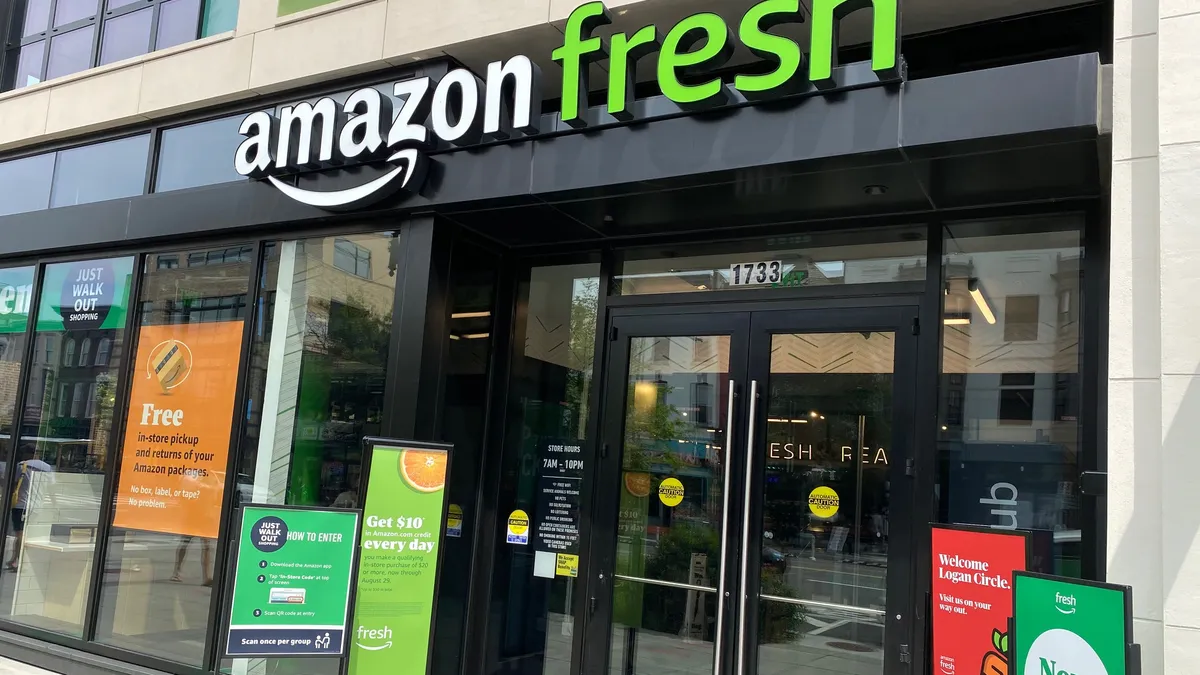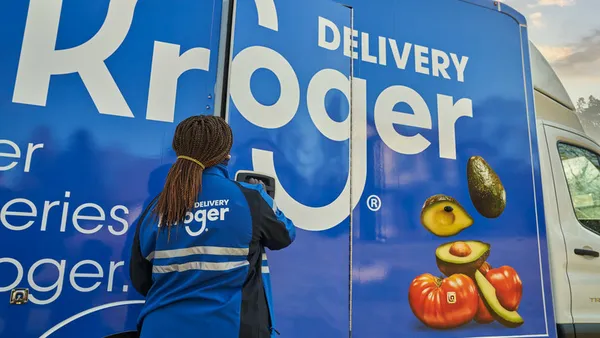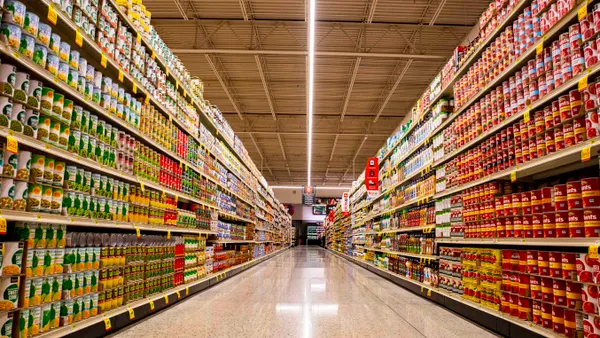Pardon the Disruption is a column that looks at the forces shaping food retail.
It’s been a little over two years since Amazon launched the much-anticipated brick-and-mortar banner of its Amazon Fresh grocery brand. When news of the chain’s arrival first came out in early 2020, the rest of the industry girded itself for the arrival of a new competitor with immense capital and technology resources behind it.
But Amazon Fresh hasn’t been the disruptive force that many anticipated. So far, it’s opened around 44 stores across several U.S. states — a trickle of about two openings per month, and likely a far cry from what the company, which sees tremendous value in grocery’s frequent and repeatable purchases, imagined.
Now, it appears that Amazon Fresh has hit the pause button on its store rollout. Tech news site The Information reported last month that the chain hasn’t opened a store since September and that numerous locations that appear set to open are now sitting dormant. These “zombie stores” are reportedly in existing markets like Illinois and Southern California as well as new ones like the Twin Cities. It also has more than two dozen Fresh stores in earlier stages of development, The Information reported. One local official told the publication that the rollout of Amazon Fresh stores has been put on hold for the time being.
There’s no official word on why Amazon Fresh appears to be hitting the brakes at a time when a low-price chain should be moving full steam ahead. An Amazon Fresh press representative said the grocery chain does not comment on its future direction.
The move comes as Amazon is reevaluating its business across the retail enterprise, having just announced more than 18,000 layoffs. It’s also unclear how Amazon Fresh fits in with the vision CEO Andy Jassy, who took over the top role in 2021, has for grocery.
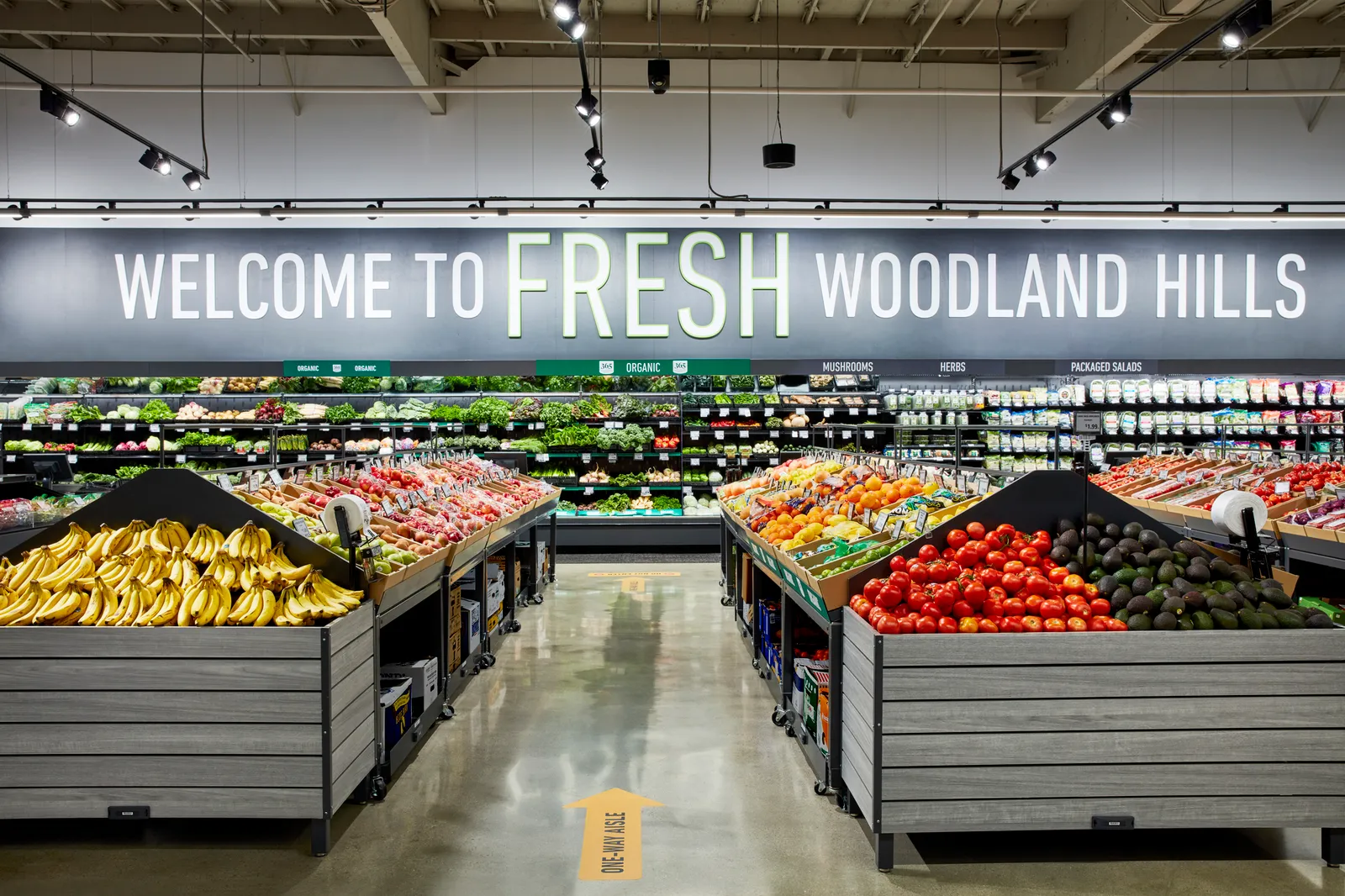
Amazon doesn’t break out sales data for Fresh, but recent foot traffic data has been encouraging for the company. Placer.ai reported in late 2021 that stores were seeing steady traffic even after they’d been open for several months. The traffic monitoring firm’s vice president of marketing, Ethan Chernofsky, said in October in an interview with OmniTalk that the chain has continued to see steady traffic to its stores.
But Amazon measures success differently from other retailers. It’s looking for its grocery properties to not just grow but to drive value for its all-important Prime membership. It needs Amazon Fresh to contribute meaningfully to a grocery ecosystem that includes its online packaged goods business, Whole Foods Market, Amazon Go and its Fresh online business. Amazon Fresh brick-and-mortar stores, it appears, aren’t pulling their weight, and the company may be looking to make a course correction early on — or pull the project altogether.
So where is Amazon Fresh coming up short? I don’t think the answer is terribly difficult to arrive at in a broad sense. As others have noted, and as I’ve noticed in several shopping excursions to local Fresh stores in the Seattle area where I live, the shopping experience isn’t particularly remarkable.
Despite the fact that just about any industry consultant will tell you differentiation is key in grocery, where most shoppers have well-established shopping patterns and loyalties, Amazon Fresh feels like it’s checking boxes instead of truly trying to win over shoppers. The stores have a perfectly serviceable selection of fresh produce, prepared foods and center store aisles lined with an adequate selection of national brands along with an assortment of local and specialty products. But nothing that’s going to convince you to shop there regularly over a Safeway, Kroger or even a local independent store that’s closer to home.
The one ace card that Amazon Fresh has up its sleeve is checkout technology, which comes in the form of its proprietary smart carts and Just Walk Out system. The latter has featured in the majority of the chain’s most recent openings, and it could be a reason why some consumers choose these stores over others.
But if the core shopping experience is stale, not even cutting-edge technology can overcome it.
‘It didn’t feel like it had a soul’
For a deeper look at what’s ailing Amazon Fresh, I turned to a former company executive who has a close connection to the brand. Tom Furphy helped launch Amazon Fresh as an online grocery service more than a decade ago. Before then, he worked as an executive for Wegmans, and over the past several years has served as an advisor to tech companies as well as CEO of auto-replenishment startup Replenium.
In a recent conversation, Furphy didn’t mince words in giving his evaluation of the Amazon Fresh shopping experience.
“It didn’t feel like it had a soul,” he said.
What does it mean for a retailer to feel soulless? For one thing, Furphy said, the stores feel a bit too much like fulfillment centers, with electronic tags lining shelves and workers picking orders in the aisles. Amazon Fresh stores are clearly made to serve both in-person shopping and a brisk pace of online orders, but it’s difficult to have a really good shopping experience and a really efficient picking operation in the same space, Furphy said.
Fresh stores also don’t appear to be solving specific consumer needs. Every grocer needs to know what type of shopper mission they’re trying to fulfill, be it a full-basket shop, fill-in trip, dinner solution or some combination. But Amazon Fresh left Furphy scratching his head.
“There wasn't a single need I had that it nailed,” he noted.
He continued: “If you don't solve the need for a clear trip type, it's gonna be really hard to be successful.”
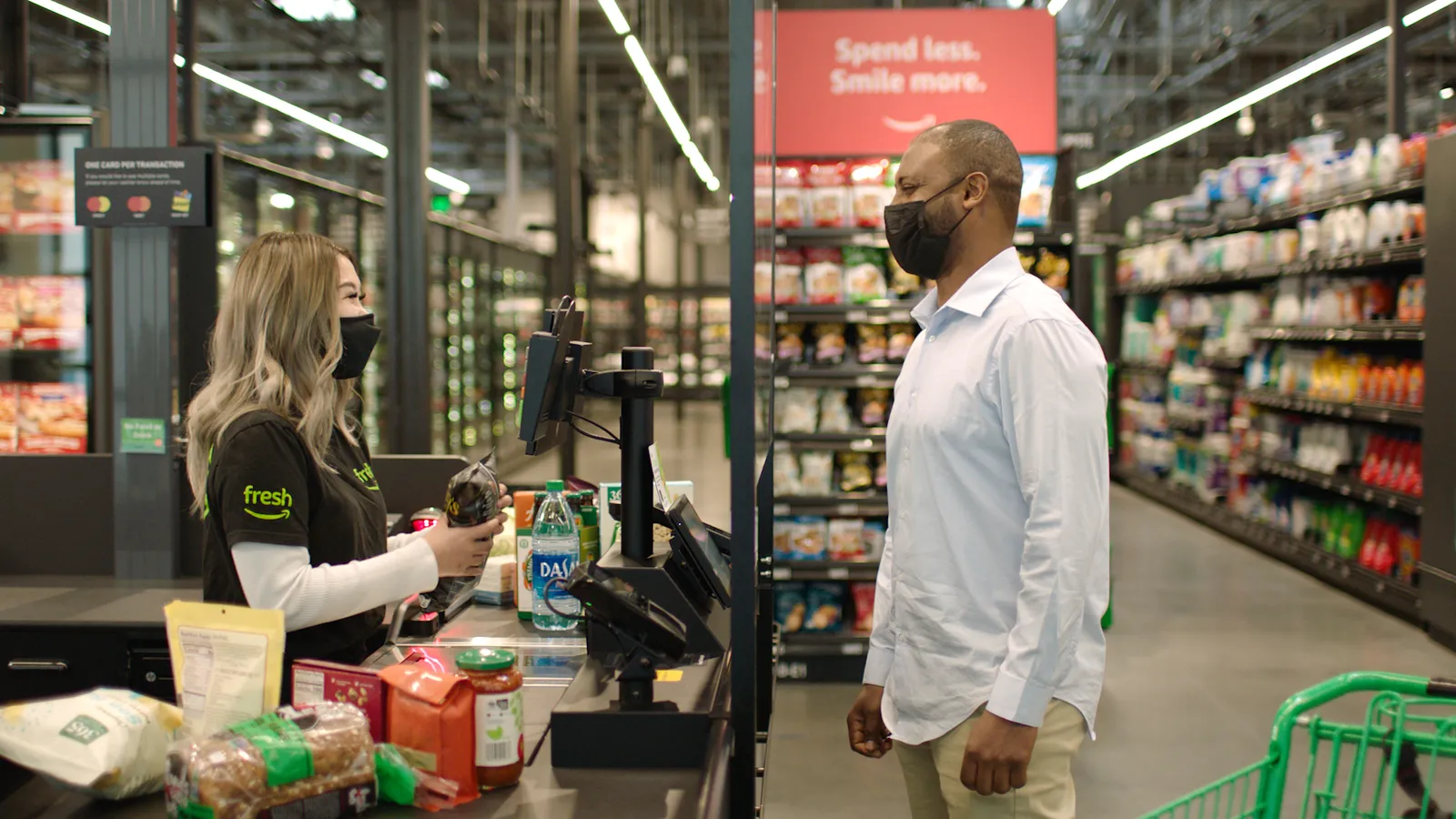
Amazon Fresh seems to be trying to fill specific shopper missions, but stops short of completing the task. Its stores have a full range of fresh and nonperishable goods, but at launch, the company’s smart cart only had enough room for two bags. (Last year, Amazon rolled out a new Dash Cart that holds four grocery bags). The stores that I’ve visited have large, open kitchens, but they serve up run-of-the-mill selections like pizza and rotisserie chicken.
Furphy said Amazon Fresh seems to have all the data-informed selections it needs to have. But it’s lacking the “magic” that other grocery operators have in place — the layer of art that accompanies all the science, in other words.
He referenced his time at Wegmans, a chain famous for having that retail magic, to make his point.
“We had every foot of those stores dialed in on what its role was and how we were going to run them… Those underpinnings are important, but the customer can’t see them,” he said. “You need to put this layer of magic on top of it. Frankly, that’s merchandising.”
It’s hardly surprising to see an e-commerce retailer struggle to craft a compelling store experience. And Amazon has always been a company that has won people over with raw power, speed and a relentless focus on convenience.
“It was almost like if you took a sample of their brain tissue and analyzed it, and then this is what came out,” Furphy said in reference to Amazon Fresh stores.
Amazon needs to figure out the subtle art of merchandising if it’s going to succeed in physical stores. Early last year, it brought in former Tesco executive Tony Hoggett to head up its physical stores unit. Hoggett spent more than 30 years with the U.K. grocery giant, rising to the role of group chief strategy and innovation officer. A few months ago, Hoggett announced the addition of two other former Tesco veterans to help lead Amazon Fresh: Claire Peters and Peter Bowrey.
New blood in the executive ranks could spur Amazon Fresh to make meaningful changes to its stores. But Furphy isn’t confident that the sort of merchandising boost the chain needs is something that can take root and grow in Amazon’s systematic, data-obsessed culture. A visionary merchant, he said, will have a hard time surviving in such an environment.
Amazon is no doubt taking a long, hard look at its nascent grocery chain. The e-commerce giant has a long history of testing and iterating, and it may very well make some smart adjustments in the coming months to salvage the project. But the challenge of righting an uninspiring, late-to-the-scene grocery chain may not be within the company’s capabilities to solve.
“Historically, I’ve had a lot of confidence that Amazon could work their way through [their grocery challenges]... and I don’t know that they’re within striking distance of an unlock at this point,” said Furphy.



